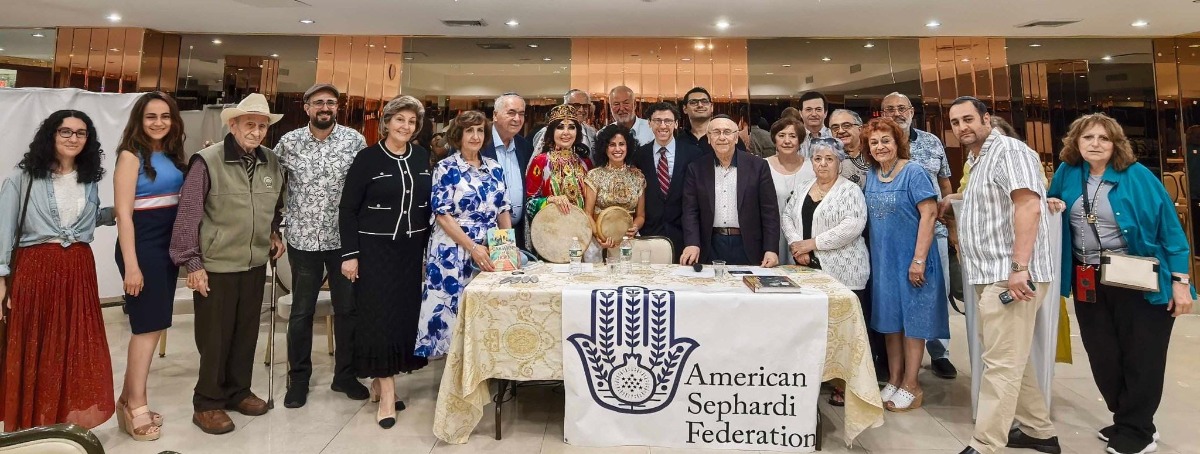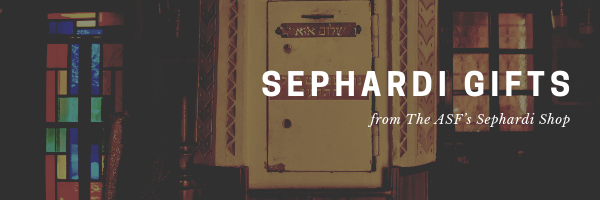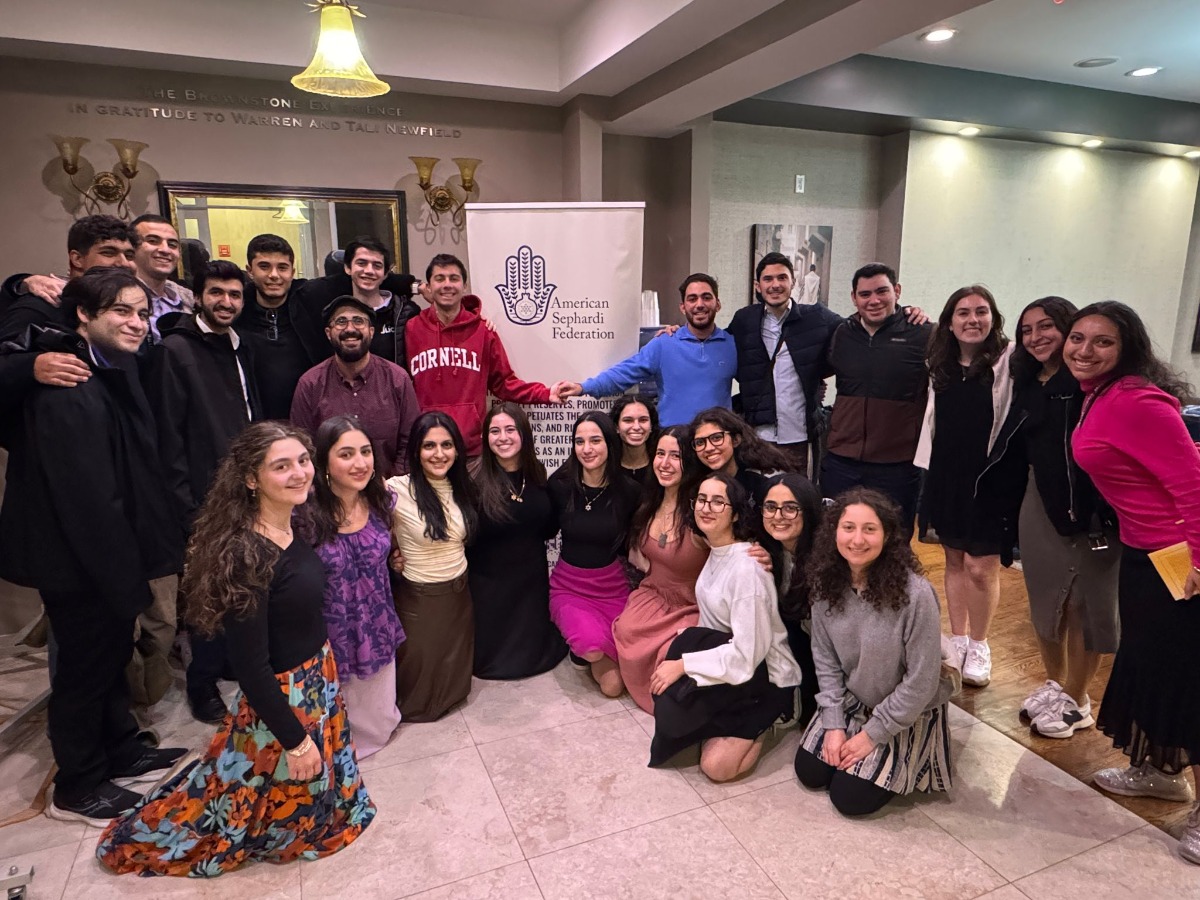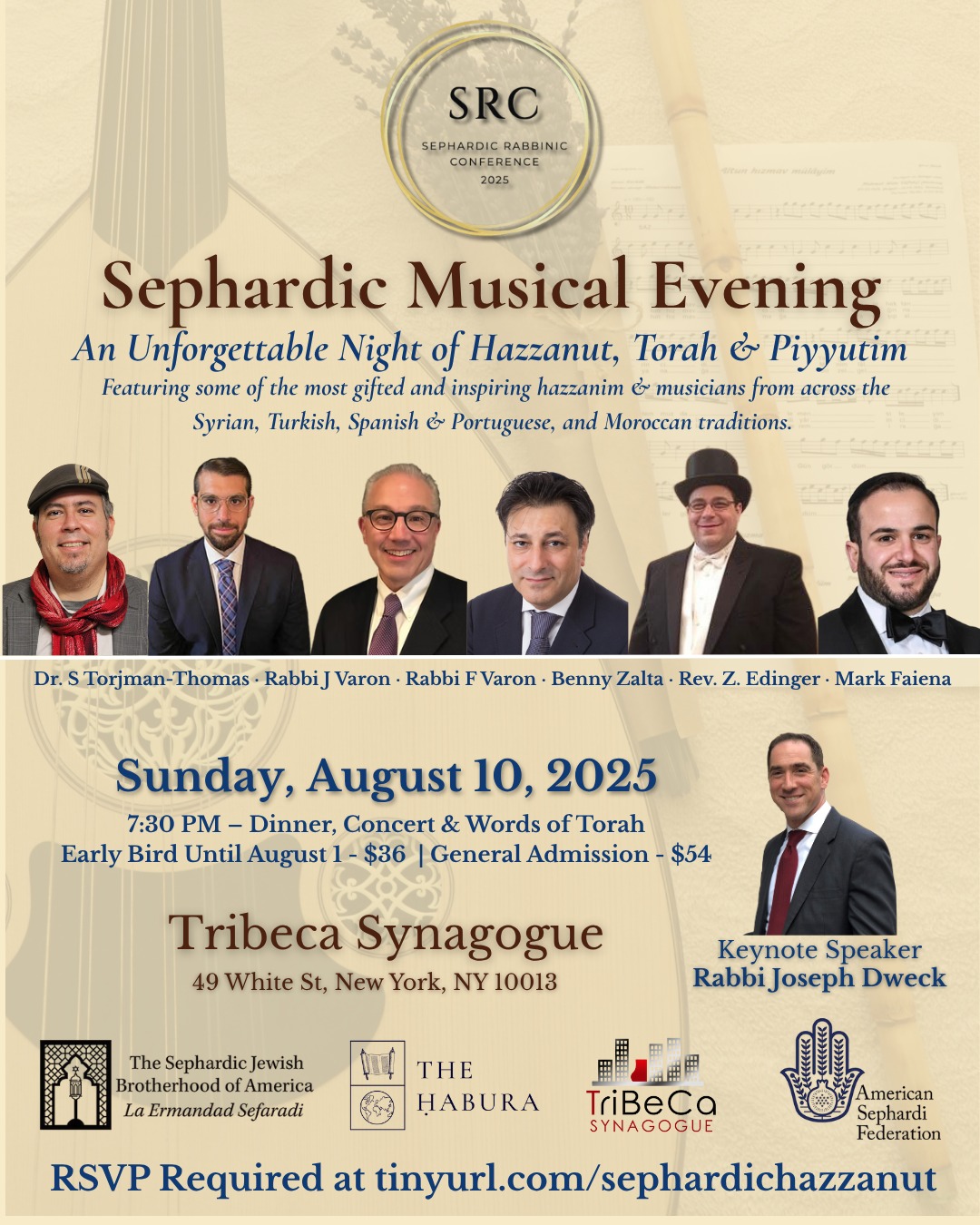In Memory of the victims of this week’s terrorist attack at 345 Park Avenue In Manhattan: Aland Etienne, Julia Hyman (A”H), NYPD Officer Didarul Islam, and UJA-Federation of New York Board Member Wesley LePatner (A”H). May their memories be for a blessing and may such depravity have no place in an American city.
Click here to dedicate a future issue in honor or memory of a loved one
Subscribe ◊ Upcoming Events ◊ ASF Sephardi Shop ◊ Donate ◊ Sephardi Ideas Monthly ◊ ASF IJE ◊ ASF Sephardi House ◊ Archive
The Sephardi World Weekly is made possible by Daniel Yifrach, Rachel Sally, Professor Rifka Cook, Maria Gabriela Borrego Medina, Rachel Amar, Deborah Arellano, & ASF VP Gwen Zuares!
Don’t miss the latest Sephardi Ideas Monthly: “Deep Listening: Exploring Music with Dan Asia”
“The Precarious Position of Iranian Jews”
By Roya Hakakian, The Atlantic
ASF Pomegranate Award for Lifetime Achievement in Literature Honoree Roya Hakakian, Opening Night of the 27th NY Sephardic Jewish Film Festival - Inaugural Festival Sefarad, El Museo Del Barrio, 8 June 2025
(Photo courtesy of Zak Siraj)
Roya Hakakian came of age Jewish in Islamist Iran (i.e., the “Land of No”). Together with her mother, she fled the country when she was nineteen. Following the detention of Jews across Iran following the the “12 Day War” with Israel, Hakakian notes their strange dilemma:
Publicity is the last thing Iran’s Jews need: Their entire survival strategy has been to lead the most inconspicuous lives possible—and news of detentions is more attention than the community wants.
While a “persistent sense of threat has been a grinding reality for Iran’s Jewry” since the 1979 Islamist revolution, the recent Israel-Iran war featuring assassinations of Iranian nuclear scientists and military leaders “has raised the stakes in ways that make the position of Iranian Jews much more precarious.”
The Islamist regime in Tehran likes to showcase the presence of Iranian Jews as proof of the country’s “tolerance.” But leaving aside the fact that a community that numbered as many as 100,000 under the Shah now numbers less than one-tenth of that figure, the regime has a history of denying requests for passports. Hakakian knows this from experience: “Many Jews, my father included, were denied passports without explanation.” So in order to escape, “they resorted to hiring smugglers to help them cross on foot into Turkey or Pakistan.”
Today? Iranian Jews who want to flee to America find a new obstacle in their already difficult path to freedom:
President Donald Trump ended nearly all refugee admissions into the United States by executive order. Some 14,000 members of persecuted minorities in Iran—among them more than 700 Jews—had registered with HIAS… the Hebrew Immigrant Aid Society.
Calling on the Trump administration to reconsider its refugee ban, Hakakian doesn’t mince words, “The United States took on a moral responsibility for Iran’s persecuted citizens when it became a combatant against their oppressive regime.”
~~~~~~~
FEATURE: The Remarkable Story of Bukharian Jewish Survival
Bukharian Jews?
(Image courtesy of Unpacked/YouTube)
Bukharian Jewish history is a fascinating story of Jewish survival and adaptation, often in isolation, in Central Asia.
Bukharian Jews trace their ancestry back to Judeans expelled from ancient Judea by the Babylonians over 2,500 years ago. Some returned to the Land of Israel when the Persians permitted it, while others moved east along “the Silk Roads,” settling in oases such as Bukhara and Samarkand. That’s where new Jewish communities developed and thrived.
In the 12th c., the Jewish traveller Benjamin of Tudela recorded that the Jews of Samarkand live in a “prosperous settlement” of 50,000. While at first connected to global Jewry, over time, especially after the conquests of Genghis Khan and the isolation of the Central Asian khanates, the Bukharians became geographically and spiritually separated, fostering a distinct Jewish identity of their own, “Cut off from the rest of the Jewish world, the Bukharian Jews were left to chart their own religious path, isolated but resilient.”
From the khanate era through today, Bukharian Jews endured isolation and periodic discrimination, secretly preserving their religious identity during forced conversions and adapting Sephardic customs after the arrival of Rabbi Yosef Mammon from the Land of Israel. Landing in Bukhara in 1793, R’ Mammon, distressed by the community’s spiritual isolation, introduced Sephardic liturgy, strengthened Jewish education by establishing new schools (yeshivot), and worked to revitalize religious observance. Although his reforms created internal rifts, his efforts ultimately transformed Bukharian Judaism and reconnected Bukhara to the broader Jewish world.
Russian rule later brought a brief period of prosperity and freedom, followed by Soviet persecution. In the modern era, most Bukharian Jews emigrated following the Soviet collapse, yet they continue to maintain their unique heritage, from modern Israel to the borough of Queens.
~~~~~~~
“Caravan of Hope”
By Erin Levi, The Bukharian Times
Aron Aronov, Ruben Shimonov (ASF), Yaffa Borukhova, Tamara Katayeva, Dahlia Abraham Klein, Jason Guberman (ASF), Arthur Godiva (ASF), Rafael Nektalov, Lyuba Pilosova, and others, Festival Sefarad, Bukharian Jewish Community Center, Queens, NYC, 29 June 2025
(Photo courtesy of Professor Yang Meng)
On 29 June, the closing public event of Festival Sefarad brought together The Bukharian Times, the Bukharian Jewish Community Center, and the American Sephardi Federation for an evening dedicated to Dahlia Abraham-Klein’s book, Caravan of Hope: A Bukharian Woman’s Journey to Freedom.
Abraham-Klein narrated the story of Bukharian Jewish migrations by tracing her family’s journeys through Afghanistan, Pakistan, India, and Israel before they finally arrived in the United States: “My family’s story is just one thread in the rich tapestry of our community’s resilience.”
The Bukharian Jewish story, Abraham-Klein noted, is rarely told:
I grew up in an Ashkenazi world and stories of the Shoah, and I didn’t hear any stories of our own, because I grew up in the 70's, and my family was one of the first [Bukharian] families here… Jewish history started and ended with the Shoah. I think the story of Central Asian Jews is–how did we thrive for thousands of years, sandwiched between [Islam] and Communism? I thought that was a very important story to share.
Echoing Abraham-Klein, The Bukharian Times Editor-in-Chief, Rafael Nektalov, who also serves as Chairman of the Union of Bukharian Jewish Writers, Poets, and Journalists of the USA, shared his hope that the event will inspire further promotion of Bukharian Jewish history and culture: “This presentation is the first, and hopefully not the last, time American Sephardi Federation has organized such a significant event in Queens, in the halls of the Bukharian Jewish Cultural Center.” The Chief Rabbi, Founder of the Bukharian Jewish Museum, and renowned singer Tamara Katayeva, as well as other leaders participated.
Ruben Shimonov, the ASF’s National Director of Education and Sephardi House, framed the evening as part of the ASF’s larger mission:
By collaborating with over 50 communal institutions, and hosting events throughout the city… the American Sephardi Federation’s goal with Festival Sefarad NYC has been to create a traveling celebration–ensuring accessibility and welcoming participation from every corner of New York City’s diverse Jewish population.
~~~~~~~
Our Story: The Jews of Sepharad; Celebrations and Stories
A special publication of the coalition for the advancement of Jewish education.
Celebrations and Stories will enhance the teaching of Sepharad in lower grades of both congregational and day schools. The life cycle and annual cycle sections are designed to horizontally connect to the teaching of customs and ceremonies. The stories will provide insight to the life of Jews who emerged from Sephardic roots. They are glimpses of daily life and values, as well as tales of our history's heroes.
From Kabul to Queens: The Jews of Afghanistan and Their Move to the United States
By Sara Y. Aharon
This engaging, innovative book brings to life the history of Afghan Jewry—from its earliest roots to the 21st century. Spanning from the community’s origins—which many Afghan Jews trace to biblical times—to the development of their Jewish communal institutions, From Kabul to Queens details the story of a small Jewish community that lived in relative peace with its Sunni Muslim neighbors. Sara Y. Aharon compellingly bridges the Jews’ experiences in Afghanistan to their successes and struggles in rebuilding a new life in the U.S. and among American Jewish society.
~~~~~~~
Upcoming Events or Opportunities
The American Sephardi Federation’s Sephardi House Fellowship is a unique learning, community-building, and leadership development program that infuses the diversity, creativity, and vibrancy of the Sephardic spirit into Jewish student life—while also advancing Jewish unity and vitality on campus.
Bringing together a select cohort of Jewish students from colleges across the United States, our program is the only national yearlong fellowship dedicated to deepening a sense of Jewish belonging through an immersion in the multifaceted history, cultures, and wisdom of the Sephardic and Mizrahi world.
For more information about ASF’s Sephardi House Fellowship, visit: www.sephardi.house
Apply Now!
Application Deadline: 8 August 2025, 5:00PM ET
For questions email the National Director of Sephardi House, Ruben Shimonov (ruben@americansephardi.org) and CC Sephardi House Engagement Associate, Stella Salmon (Salmon@americansephardi.org).
~~~~~~~
Our friends at LESJC in partnership with the American Sephardi Federation, and Congregation Mickve Israel present:
Virtual Tour of Savannah’s Historic Mickve Israel Synagogue
Shalom y’all! Join us for an exclusive virtual tour of America’s third oldest Jewish Congregation and the only neo-Gothic synagogue in the United States. In 1733, a group of mostly Spanish & Portuguese Sephardic Jewish immigrants arrived in Georgia from England, where they had found refuge from the horrors of the Inquisition. Bringing with them a Torah scroll from London’s Bevis Marks, the group settled in Savannah and founded Mickve Israel, the state’s first synagogue, in July 1735. Construction of the sanctuary began in 1876 and was completed in 1878. New York architect Henry G. Harrison pure neo-Gothic design reflected the fashionable architecture of the Victorian era. Congregation Mickve Israel was named one of the “15 Most Beautiful Synagogues in the World” by Condé Nast Traveler and rated among the “15 BEST Things to Do in Savannah” by Trip Advisor.
Sunday, 3 August, 11:00 AM 12:30 PM
Sign-up Now!
Tickets: $10
About the guide:
Your guide for this tour will be Rabbi Robert Haas, a native of McAllen, Texas, who became the 14th spiritual leader of Congregation Mickve Israel in Savannah, Georgia, in 2012. After receiving his B.S. from the University of Texas at Austin, he began his first career as an elementary school teacher before matriculating at Hebrew Union College in Jerusalem and Los Angeles, where he earned his Master’s Degree and Rabbinical Ordination. After graduation, he served as an associate rabbi in Dallas and in Houston, Texas. He then spent a year volunteering in Africa with American Jewish World Service before moving to Savannah. Rabbi Haas is a sought-after comedian, lecturer, preacher, and interfaith leader, regularly speaking and performing for organizations, radio shows, colleges, theaters, houses of worship, and institutions.
~~~~~~
The Sephardic Rabbinic Conference in partnership with the American Sephardi Federation, Habura, Sephardic Jewish Bortherhood of America, and TriBeCa Synagogue present:
An Evening of Sephardic Music & Celebration
Join us for an unforgettable evening of Sephardic hazzanut, Torah, and Piyyutim with visiting Sephardic hazzanim and Hahamim from around the world!
This special evening is a part of the Sephardic Rabbinic Conference, a new and exciting gathering of Sephardic community Rabbis in New York with partners from across the globe. Featuring keynote speaker Rabbi Joseph Dweck, Senior Rabbi of the S&P Sephardi Community of the United Kingdom, and six local and visiting Sephardic community Hazzanim of Syrian, Turkish, Moroccan, Spanish & Portuguese, and Persian heritage.
Sunday, 10 August, at 7:30 PM
Sign-up Now!
@Tribeca Synagogue - 49 White Street, NYC
Tickets: $36 Early Bird; $54 General Admission
~~~~~~
Our friends at Qesher in partnership with Nora Kaplan Learn-in-trips presents:
Jewish History Tours to Spain
BARCELONA-CORDOBA-GRANADA
SEVILLA-TOLEDO-MADRID
Embark on a 12-day journey this October and November 2025 to experience the history of Jews in Sepharad: explore museums and world heritage sites, walk through the old cobbled lanes of Jewish quarters, take in the splendid architecture, and enjoy delicious food and Spanish wine.
Learn about the Golden Age of Jewish life in Spain on this unique, family-run Jewish Heritage Tour.
26 October - 6 November, 2025
Early Bird Price: EUR 5,700 if booked by 26 July, 2025
For questions or more information, please visit www.norakaplan.com or email alexis.learnintrips@gmail.com.
Note: While this is not an ASF program, the American Sephardi Federation is proud to serve as a promotional partner for this unique educational experience.








